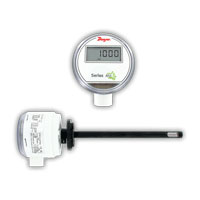 Partially or completely closed school facilities have been the reality of many school corporations and families across the country since we were struck by the COVID-19 pandemic. It has effectively targeted our preparedness; changing how we view building’s HVAC systems, indoor air quality (IAQ), and even how parents and teachers view which schools are the safest, best institutions for themselves and their families.
Partially or completely closed school facilities have been the reality of many school corporations and families across the country since we were struck by the COVID-19 pandemic. It has effectively targeted our preparedness; changing how we view building’s HVAC systems, indoor air quality (IAQ), and even how parents and teachers view which schools are the safest, best institutions for themselves and their families.
To address this phenomenon, ASHRAE and The Center for Green Schools partnered to launch the first known national effort to collect district level data on IAQ measures in response to the COVID-19 pandemic, as detailed in their “Preparation in the Pandemic: How Schools Implemented Air Quality Measures to Protect Occupants from COVID-19” report.
This report detailed K-12 schools in 47 districts and independent schools, representing over 4,000 schools and 2.5 million students in cities, suburbs, and rural areas over 24 states. In the study they asked the respondents how they prioritized and responded to 6 different IAQ strategies to improve ventilation to reduce airborne transmission. Not surprisingly, mechanical ventilation that increased fresh air was both most highly prioritized and most commonly adopted amongst the respondents*, followed closely by flushing rooms with fresh air before and after they are occupied for a pre-specified duration. In the study, one of the main challenges cited by participants was that the current HVAC systems were not designed to support mechanical ventilation and fresh air flushing in their current state.
Another year later, ASHRAE and The Center for Green Schools partnered with Trane to launch a follow-up study “Managing Air Quality During the Pandemic: How K-12 Schools Addressed Air Quality in the Second Year of COVID-19” to reflect on how the pandemic, and schools’ responses to it, evolved in the intervening months.
The new study highlighted the “seeing is believing” phenomenon. Teachers felt more comfortable when seeing physical signs of increased indoor air quality and filtration, such as portable room filtration options, versus simply being aware that adjustments to the HVAC systems were made that increased outside air and room air changes.
 There is typically limited data and instrumentation in a school setting that physically ensures and reports on the effectiveness of the increases of clean outdoor air. Per the study, “Building managers know that opening outdoor air dampers on HVAC units will lead to increased outdoor air delivery indoors, assuming the system is working properly; however, it is less clear to what extent changes to damper openings are associated with air exchange rates unless this is being measured.” Without the physical “proof” of increased indoor air quality, building occupants are not more comfortable, despite its known effectiveness of reducing the spread of disease. By measuring the supply and return air velocities or flows, building owners and managers can show the increases in air changes and increases to clean outside air. In addition, monitoring supply and return air velocities can help to ensure proper maintenance on dampers that may go unnoticed without regular maintenance.
There is typically limited data and instrumentation in a school setting that physically ensures and reports on the effectiveness of the increases of clean outdoor air. Per the study, “Building managers know that opening outdoor air dampers on HVAC units will lead to increased outdoor air delivery indoors, assuming the system is working properly; however, it is less clear to what extent changes to damper openings are associated with air exchange rates unless this is being measured.” Without the physical “proof” of increased indoor air quality, building occupants are not more comfortable, despite its known effectiveness of reducing the spread of disease. By measuring the supply and return air velocities or flows, building owners and managers can show the increases in air changes and increases to clean outside air. In addition, monitoring supply and return air velocities can help to ensure proper maintenance on dampers that may go unnoticed without regular maintenance.
Dwyer has a number of robust, flexible, and easily installable solutions that can help schools accurately measure and validate the air supplied to classrooms, increasing ventilation that can reduce airborne transmission.

The award-winning Series AVUL air velocity transmitters can quickly and accurately measure air velocity or volumetric flow with multiple output options and communication protocols. The Series MSX and MSX Pro Magnesense® differential pressure transmitters provide differential pressure monitoring in air handlers, ducts, VAV systems and buildings with a total of 32 ranges. The Series MAFS and Series PAFS averaging flow sensors work with air velocity gages, transmitters, and switches to deliver an accurate measurement of velocity pressure in a duct.
With the variety of options, outputs, and ranges of these series and more, Dwyer products can easily fit into existing HVAC systems to start supporting these highly prioritized initiatives.
If you have any questions about selecting products for your application, the Dwyer Applications Engineers are available to assist by phone at (219) 879-8868 x6402, or by email at tech@dwyermail.com.
For information about the importance of sensor stability in schools, please read our blog article here.
To learn about the White House “Clean Air in Buildings” Challenge, check out our blog series below:
- Part 1: https://blog.dwyer-inst.com/2022/04/13/the-white-house-clean-air-building-challenge-iaq-action-plan-for-our-future/
- Part 2: https://blog.dwyer-inst.com/2022/04/27/the-white-house-clean-air-in-buildings-challenge-from-plan-to-action/
- Part 3: https://blog.dwyer-inst.com/2022/05/11/the-white-house-clean-air-in-buildings-challenge-taking-advantage-of-government-funding-initiatives/
*rated above MERV & HEPA filters, fans, and open windows
